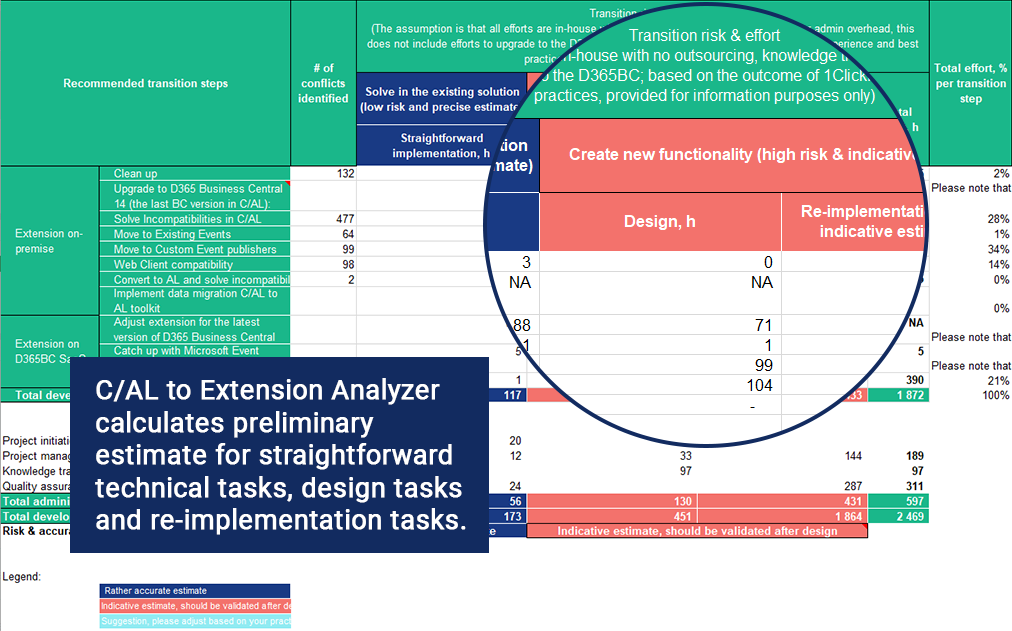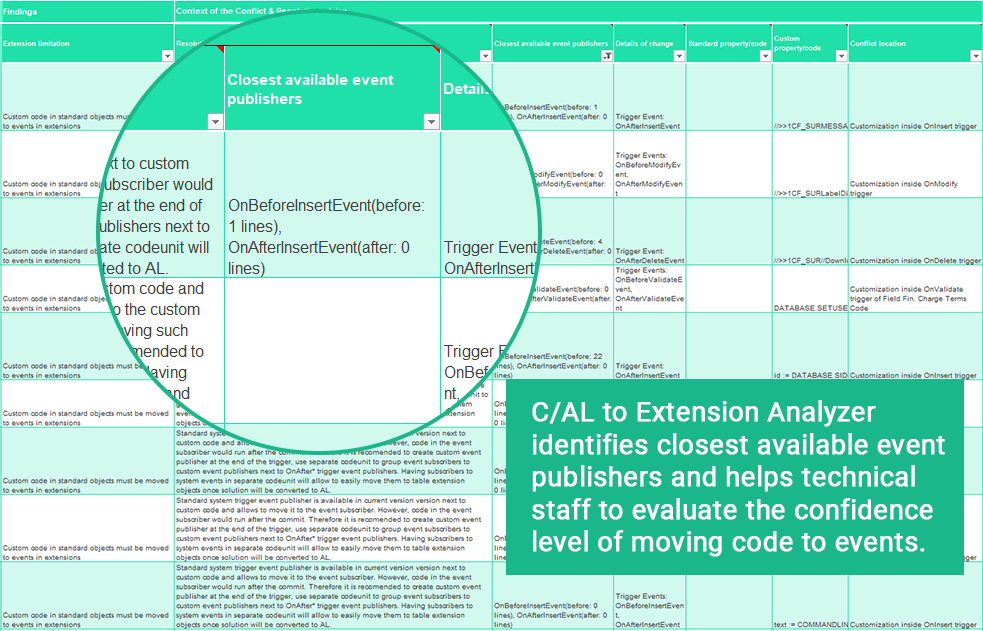Thursday, December 5, 2019
The technological changes in the Microsoft Dynamics 365 Business Central SaaS market require a lot of preparation from Microsoft Dynamics Partners. Dynamics Partners often struggle to understand the level of disruption and the resources required to successfully adapt. Thus, when transitioning from C/AL to Dynamics 365 Business Central Extensions, Dynamics Partners often look for an experienced consultant or solution architect who can help to analyze Microsoft Dynamics NAV solutions. It usually takes around 2-3 weeks to figure out how big the changeover to an Extension can be, which is time consuming and costly; an exercise that can often result in delays to the project.
Implications of the Latest Business Central Release
The 2020 October Business Central release will only be supported in AL coding language, this means the transition process now has a deadline. Consequently, there is a short period of time left for Dynamics Partners to move their existing customers from C/AL to AL.
To accomplish a successful transition is not an easy feat. It is an ambiguous task with lots of risks involved. To understand the potential challenges, the detailed feasibility analysis of C/AL transition to AL is required. This helps to figure out the most efficient way to transition, assess how long it will take and how much effort it will necessitate.
How does moving from C/AL to Dynamics 365 Business Central Extensions affect technical staff?
The findings from the C/AL to Extension analysis are critical when selling in a transition project, therefore the sales staff within the Dynamics Partner organization would typically put pressure on technical staff to make changes in the fastest way possible. Usually, only the most senior or experienced technical staff can do a thorough C/AL solution’s assessment because of their ability to measure the impact of the changes.
To evaluate the risks, technical staff need to put in a lot of effort during the initial stages of the C/AL to Extension project. They’ll assess major challenges, high level effort and overall feasibility. To do this, reviewing of the code and identifying issues is required, which is a tedious and time-consuming process. It also significantly limits the senior staff’s capacity for other necessary jobs. Hence, this is why the demand is rising for a more modern approach to the transitioning processes.
Top 5 Time-Consuming Challenges Faced When Moving to Extensions
- Reviewing the Custom Code: the greatest transformation to Extensions effort is reviewing the code to assess the impact of custom code and whether it is possible to move the custom code to standard event publishers.
1ClickFactory has lots of experience in this arena, and have found generally the task of moving custom code to events takes around 60-70% of effort in the entire C/AL to Extensions project. It is a protracted exercise because each code modification needs to be manually reviewed to evaluate the compatibility with closest standard event publishers.
- Manual Assessment: a manual assessment of all changed standard fields, as it needs to be determined if changes in field properties are supported by table Extensions.
One of the most frequent blockers are usage of standard fields in custom keys, or changes in standard keys. During the manual review, it takes significant amount of time to evaluate if changes in the keys are compatible with table Extensions.
- Web Client Compatibility: Microsoft Dynamics 365 Business Central version 15 supports only Web client, but most of the solutions are run primarily on the RTC Windows client.
When transitioning to Microsoft Dynamics 365 Business Central, technical staff need to evaluate a lot of small features that run differently in the Web client. Failing to do this can cause the unexpected addition of effort when the converting solution moves to the testing and production phase.
- Cleaning up the Code: It is also important to consider that in most of the solutions there are a lot of unused variables, objects and methods.
Therefore, cleaning code before the project reaches developers would increase productivity because they would have less to trawl through. Nevertheless, identifying those variables manually, without automated tools, is not worth the effort.
- Assess SaaS Compatibility: which has additional constraints, such as restriction of .net usage and direct manipulation of files.
Even though when transitioning to Extensions the first step is to make it on-premises only, SaaS compatibility is important thing for the technical staff to keep in mind in order to move to SaaS in later stages.
How Can the C/AL to Extension Analyzer Help with Quickly Scoping the Transition
Identifying and documenting the problems can be done automatically by 1ClickFactory‘s newly launched tool - C/AL to Extension Analyzer.
The C/AL to Extensions Analyzer assesses C/AL solution and in one business day provides a report which identifies a detailed list of conflicts, gives advice on how to solve issues and calculates time-frames for how long it might take to complete the transition.
Even though the report is not a crystal ball and doesn‘t immediately tell sales people the exact price of the transition project, it significantly helps technical staff when scoping and planning the transition project requirements. All they need to do is to review the analysis findings and validate estimates as to whether they are relevant for their particular case.
After the review, the C/AL to Extension Analyzer Report summary sheet can be handed over to the sales and management team, for them to proceed further and provide answers to customers.
The C/AL to Extension Analyzer Report also helps technical staff by providing information about the closest event publishers, with proximity of lines to custom code.
The report facilitates scoping and planning the transition process by identifying:
- Changed fields in standard keys
- Standard fields in custom keys
- Custom methods in standard code
- Changes of parameters in standard methods
- Non-compatible modified property
- Missing captions in pages
- Unused variables and methods
- Direct file operations in custom code
- Direct access to server resources
- .NET variables in custom code
- Obsolete functionality
It also shows usage of custom .net variables, direct manipulation of files and access to server resources.
To find out more about the C/AL to Extension Analyzer:
visit www.1clickfactory.com/ExtensionAnalyzer
or Register for our upcoming webinar
If you have any questions, chat with us online via https://www.1clickfactory.com/ or email service@1clickfactory.com.

